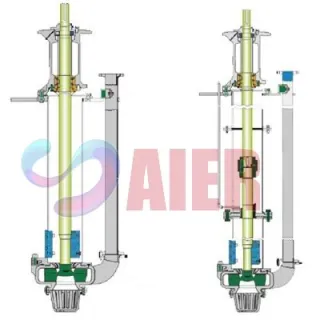Noy . 25, 2024 17:40 Back to list
best pump for lime slurry factories
Choosing the Best Pump for Lime Slurry Factories
In the industrial landscape, lime slurry is a vital component in numerous applications, from environmental treatment to mineral processing. The successful handling of lime slurry requires not only a reliable production process but also efficient transport mechanisms, namely pumps. Selecting the right pump for lime slurry factories is crucial to ensure operational efficiency, minimize downtime, and optimize costs. In this article, we will explore the properties of lime slurry, the challenges involved in pumping it, and the best pump options available.
Understanding Lime Slurry
Lime slurry is essentially a mixture of lime and water, creating a suspension that is utilized in various sectors, such as construction, water treatment, and flue gas desulfurization. Its composition can vary depending on the intended application, but it typically contains fine particles that can be very abrasive and corrosive. This necessitates pumps that can handle solid-liquid mixtures effectively.
Challenges in Pumping Lime Slurry
Pumping lime slurry poses several challenges
1. Abrasion The solid particles in lime slurry can cause significant wear on pump components, reducing their lifespan and efficiency. 2. Viscosity Lime slurry's viscosity can change with concentration levels, making it essential for the pump to adapt to varying flow conditions. 3. Corrosion The chemical nature of lime can lead to corrosion, especially when aggressive agents are introduced into the slurry. 4. Settling Over time, the solids in lime slurry can settle, creating a challenge for continuous pumping processes.
Addressing these challenges requires a well-thought-out strategy concerning pump selection and system design.
Best Pump Options for Lime Slurry
When selecting a pump for handling lime slurry, there are several types to consider
1. Centrifugal Pumps These are commonly used for pumping liquids and can handle lime slurry effectively if designed accordingly. Look for heavy-duty centrifugal pumps with wear-resistant materials such as high-chrome alloys or rubber linings. A pump with adjustable speed can provide flexibility for varying viscosity levels.
2. Progressive Cavity Pumps Also known as helical rotor pumps, these are well-suited for viscous and non-Newtonian fluids. They can handle the varying flow rates of lime slurry without shearing the solids, making them an excellent choice for applications with variable solid content.
best pump for lime slurry factories

3. Diaphragm Pumps These pumps are best suited for applications requiring high-pressure outputs and can efficiently handle slurries with high solid content. They can also cope with varying flow rates, and their design minimizes the risk of clogging.
4. Rotary Lobe Pumps These pumps are ideal for delicate slurries that cannot tolerate shear. They maintain a gentle pumping action without damaging the solid particles present in the lime slurry.
5. Peristaltic Pumps Although less common, peristaltic pumps provide the benefit of handling corrosive materials and solid-liquid mixtures without any contact between the pump components and the slurry. They are particularly valuable for small batch processes.
Factors to Consider When Choosing a Pump
When selecting a pump for lime slurry, one should keep in mind several factors
1. Material Compatibility The pump's construction material must resist both abrasion and corrosion from lime slurries. Stainless steel, high-chrome alloys, and rubberized coatings are often recommended.
2. Flow Rate and Pressure Requirements Ensure that the pump can deliver the required flow rates at the pressures needed for your process. Calculate the total dynamic head for a more accurate assessment.
3. Maintenance and Serviceability A pump that is easy to maintain will save time and costs in the long run. Look for designs with readily accessible components for quick service and repair.
4. System Layout The design and layout of your pumping system can influence pump selection. Consider the distance the slurry must travel, the elevation changes, and the potential need for redundancy.
Conclusion
In conclusion, the pumping of lime slurry in factories is a technical challenge that requires careful consideration and selection of the appropriate pump type. By understanding the properties of lime slurry and the specific needs of your industrial application, you can choose a pump that not only meets performance requirements but also enhances overall operational efficiency. Investing in the right pumping solutions will ultimately result in cost savings, reduced maintenance needs, and improved production capabilities.
-
Top Submersible Pump Companies High Quality Manufacturers & Suppliers in China
NewsJul.08,2025
-
High Quality Seal for 5 Inch Dredge Pump Reliable China Manufacturer & Supplier
NewsJul.08,2025
-
High-Efficiency Slurry Sand Pump from Leading China Manufacturer – Durable & Reliable Solutions
NewsJul.07,2025
-
High-Quality Slurry Pump Made in China Durable Steel Mill Slurry Pump & Parts
NewsJul.07,2025
-
High Quality Excavator Dredge Pump Manufacturer & Suppliers from China – Reliable, Durable, Efficient Solutions
NewsJul.07,2025
-
Wholesale Slurry Pump Closed Impeller Supplier High Efficiency China Slurry Pump Closed Impeller
NewsJul.06,2025
